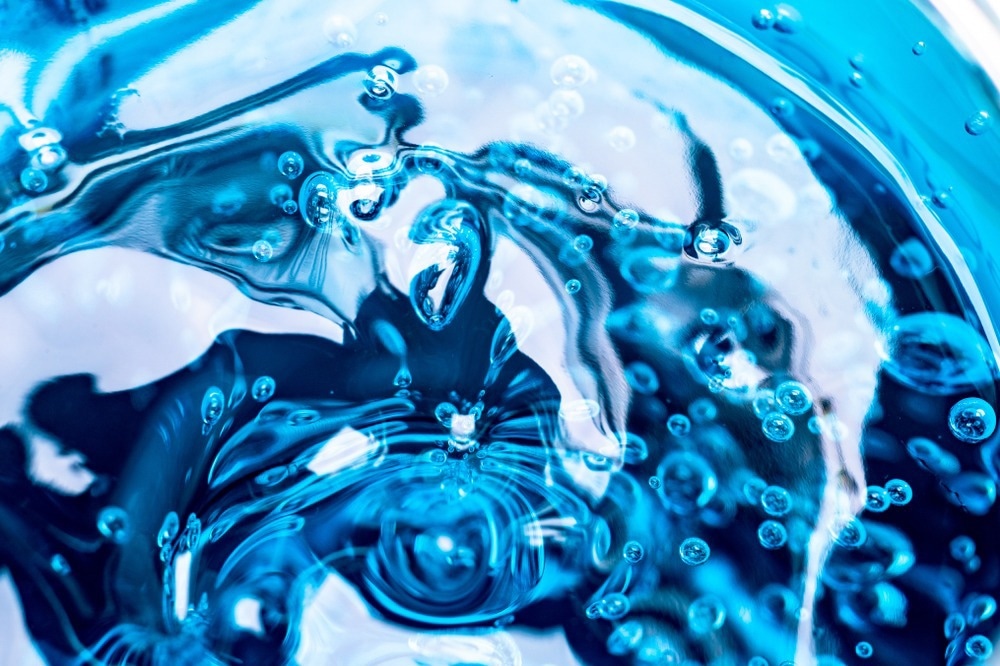A recent article published in Gels proposed fabricating chiral co-assembled hybrid hydrogels using L/D‐phenylalanine gelators (L/DPFEG) comprising epigallocatechin gallate (EGCG) and cross-linked with polyvinyl alcohol (PVA) and hyaluronic acid (HA).

Image Credit: Gilmanshin/Shutterstock.com
Background
Chiral self-assembled nanofibers derived from peptides and amino acids can form supramolecular hydrogels that exhibit unique physicochemical properties. These biomaterials, closely resembling extracellular matrix (ECM), are applicable in drug delivery, wound healing, and tissue engineering. However, they exhibit limited functionality in practical applications.
Biomedical domains require multifunctional biomaterials prepared through a facile approach. For instance, synthetic integration of supramolecular hydrogels with various molecules and polymers yields biomimetic hybrid hydrogels with intrinsic merits of each constituent.
In this study, L/DPFEG-based gelators were used as supramolecular components to design chiral hybrid hydrogels with self-assembling behavior in water. Cross-linking these hydrogels with PVA contributed to their mechanical strength, adhesion, biocompatibility, easy processing, hydrophilicity, and film-forming capability.
HA was added to make the hydrogels biodegradable and biocompatible and enhance their water retention capacity, making them suitable for wound healing. EGCG, with antioxidant, anti-inflammatory, and antibacterial properties, was incorporated into the hydrogels.
Methods
The LPFEG and DPFEG gelators were synthesized using a standard procedure and used to prepare chiral co-assembled LPH-EGCG (LPFEG+HA+PVA+EGCG) and DPH-EGCG (DPFEG+HA+PVA+EGCG) hybrid hydrogel systems through a simple heating-to-cooling approach. The formation of these hydrogels was confirmed through a vial inversion method. Pure LPFEG and DPFEG assemblies were also prepared using the same approach for comparison.
The microstructures of the prepared hybrid xerogels were examined using a scanning electron microscope (SEM) after freeze-drying. Fourier transform infrared (FTIR) spectroscopy analyzed the intermolecular interactions in the hydrogel systems. X-ray diffraction (XRD) determined their crystal structure, and their structure and chirality were further investigated using circular dichroism (CD) and ultraviolet-visible spectroscopy.
Multiple experiments were conducted to investigate the swelling and rheological characteristics of the synthesized hydrogels. For biofunctionality, the hydrogels were tested for antibacterial efficacy against S. aureus (gram-positive) and E. coli (gram-negative) bacterial strains through inhibition zone formation and an in vitro biofilm destruction test.
Additionally, the biocompatibility, cell adhesion, proliferation, and migration characteristics of the chiral hydrogels were studied using human umbilical vein endothelial cells (HUVECs). Cell adhesion and proliferation were assessed after 6, 24, 48, and 72 hours of incubation, while cell migration was studied after 12 and 24 hours of incubation.
Results and Discussion
FTIR experiments revealed non-covalent interactions involved in the co-assembly of different components of the hybrid hydrogels. SEM images depicted the porous morphology of pristine PVA and HA and the three-dimensional helical left-handed fibrous morphology of pure LPFEG hydrogel.
The LPH-EGCG hybrid hydrogels had a dual-cross-linked interconnected structure created through the co-assembly among PVA, HA, EGCG, and LPFEG. This hybrid system revealed a highly ordered and dense porous structure compared to pure PVA and HA hydrogels, becoming more dense, compact, and rough with increasing EGCG content.
The highly crystalline peaks of EGCG and LPFEG xerogel disappeared in the XRD patterns of the LPH-EGCG hybrid, indicating possible interaction among them. The hybrid gel systems exhibited a 103 % swelling ratio compared to pure LPFEG/DPFEG hydrogels, which are attributed to the hydrophilic polymers.
During in vitro stability tests, pristine LPFEG displayed poor stability, disintegrating almost completely in a physiological environment of phosphate buffer saline (pH 7.4) for 21 days. However, LPH-EGCG and DPH-EGCG gels could withstand this environment for longer periods.
Non-covalent interactions between fibers of LPFEG and EGCG, PVA, and HA polymer chains improved the hydrogels’ stability, water, mechanical strength, self-healing, adhesiveness, and injectability.
In vitro experiments demonstrated high antibacterial and antioxidant activities of LPH-EGCG and DPH-EGCG chiral assemblies, which outperformed control groups due to the presence of EGCG. They also had distinct effects on the adhesion and growth of HUVECs, creating a chiral microenvironment to facilitate cell growth and migration.
Conclusion
The researchers successfully synthesized multifunctional hybrid gel systems using a simple co-assembly method. Multi-component co-assemblies were created within these gel matrices through synergistic, non-covalent interactions between L/DPFEG chiral gelators and EGCG molecules. Their chiral properties precisely controlled the hydrogels’ cell adhesion and migration behavior.
Chirality transfer occurred from the L/DPFEG-EGCG co-assemblies to PVA/HA hydrogel through chain-chain non-covalent interactions. This process improved the hydrogels’ stability, water absorption, mechanical strength, self-healing, adhesiveness, and injectability.
In vitro studies demonstrated enhanced antibacterial and antioxidant activities and cell migration of the chiral LPH-EGCG hybrid system, making it suitable for various tissue engineering applications. The researchers highlighted the potential of these components to create a hybrid hydrogel material with enhanced biological and mechanical properties for advanced biomedical applications.
Journal Reference
Riaz, Z., Sravan Baddi, Gao, F., Qiu, X., Feng, C. (2024). Supramolecular Polymer Co-Assembled Multifunctional Chiral Hybrid Hydrogels with Adhesive, Self-Healing and Antibacterial Properties. Gels. DOI: 10.3390/gels1008048
Disclaimer: The views expressed here are those of the author expressed in their private capacity and do not necessarily represent the views of AZoM.com Limited T/A AZoNetwork the owner and operator of this website. This disclaimer forms part of the Terms and conditions of use of this website.